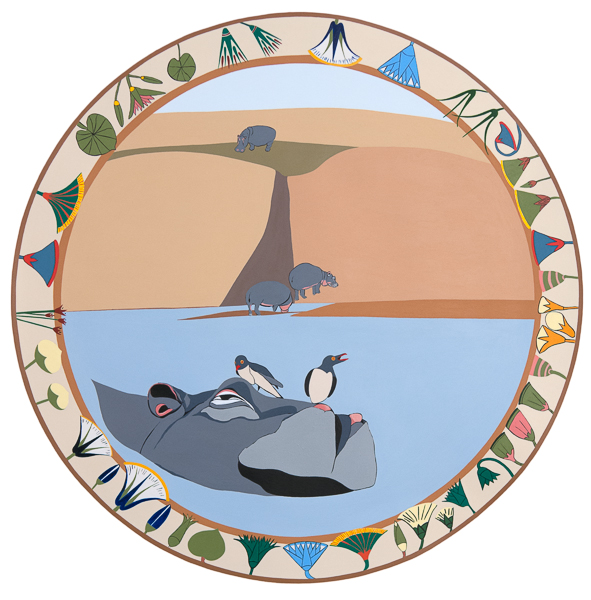
![]()
Hippos and Papyrus in Ancient Egypt
For generations hippos have used the same pathways to the “hippo lawns” where they graze on tender, short grasses. They graze from dusk to dawn, walking as far as 6 miles, returning to the water where they wallow in mud to keep cool. The hippopotamus has a significant impact on the land they walk across, both by keeping the land clear of vegetation and depressing the ground. Over prolonged periods, these “river horses” diverted the paths of lowland waters, swamp and channels, especially during flooding in the rainy season. Their pathways formed gullies that grew to 65 feet deep. This served a role both as drainage and conservation in drought. The hippo droppings along the pathways and defecation in the water constitute a massive buildup of microorganisms, that support a chain of life for the growth of water plants and algae. The algae become food for smaller fish, the water plants provide them with a hiding place.
Papyrus grew along the Nile Delta, a swamp plant where in ancient times it was widely cultivated. In the decorative art of the Old, Middle and New Kingdoms of Egypt the papyrus inflorescence was applied either in the round to form part of various objects, on a large scale as columns, or painted as flat motifs. The development of the papyrus motifs in frescoes illustrates the emergence of a classical Egyptian stylistic design.
The Hippopotamus lived in fresh water along the Nile where in ancient times the Egyptian civilization had to adapt to the conditions of the Nile River Valley. In the tomb of “The Steward Senbi” at the Metropolitan Museums’ Egyptian Collection, there is a sculpture molded in faience of William the Hippo (1961-1878 B.C.) in stunning Egyptian blue, delicately painted with lines of black papyrus. Hippo statuettes were placed in tombs and temples to help the deceased be successfully reborn in the afterlife. The goddess of fertility, the river goddess, Taweret represented the Hippopotamus. Offerings were made in hope of placating her. Other goddesses later on in the New Kingdom represented nourishment not destruction. Egyptians lived in fear, yet revered the hippo.